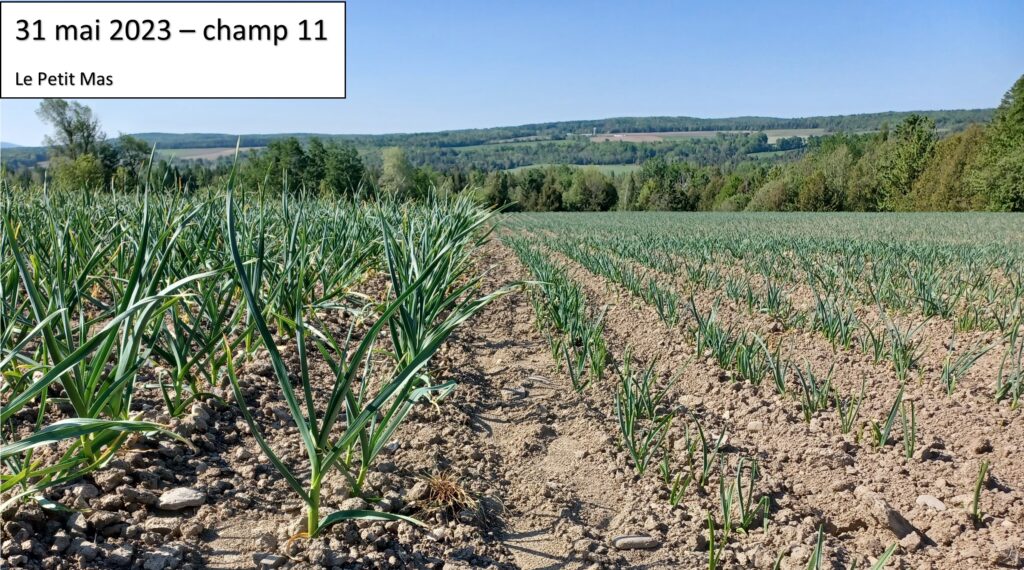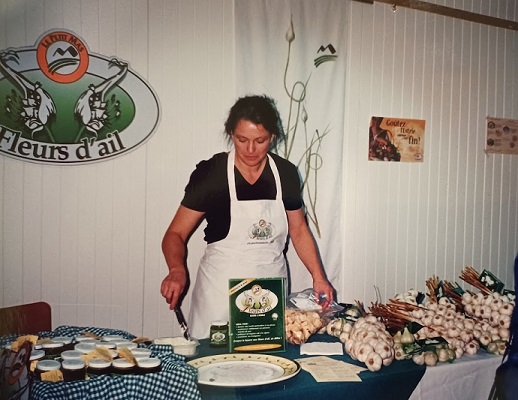Historically, «SOLO» garlic refers to a variety of Allium sativum (garlic) that produces only one clove. The diameter is usually between 25 and 50 mm. It can have several other names such as: single-clove garlic, pearl garlic, and even male garlic (seen at the Jean Talon Market in Montreal). The “SOLO” garlic that is commercially available in large quantities usually comes from China, mainly from the Yunnan region (1). This garlic is found in small packets in supermarkets and is also used to make black garlic.
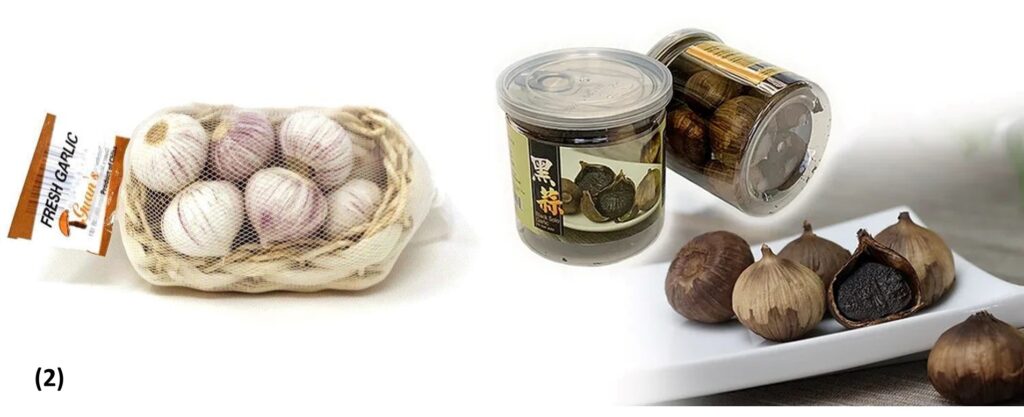
Chinese «SOLO» garlic is therefore a very specific production with a variety suitable for the environmental conditions of that country. But what about Le Petit Mas’ organic «SOLO Music» garlic?
Our «SOLO Music» garlic is simply «Music» variety garlic that has simply failed to divide to form cloves and well-formed bulbs. This garlic therefore has the same properties as «Music» garlic in terms of taste and storage capacity.
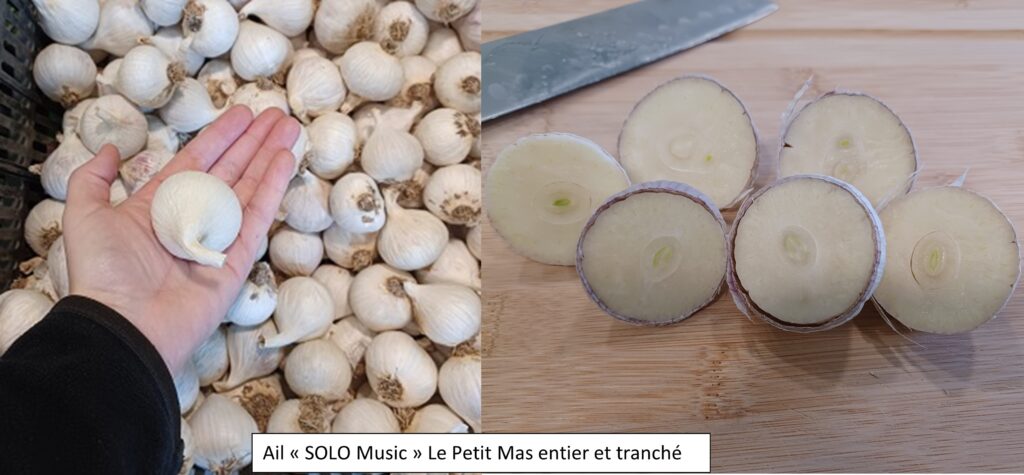
On the culinary side, the advantage is that ONE «SOLO» garlic can correspond to 3-4 cloves, so even less peeling! With this garlic, you can even make “garlic chips”! You slice the “SOLO” garlic with a thickness of about 2 mm per slice. Cook the slices in a skillet with a drizzle of oil. When the “chips” seem golden brown and crispy, they’re done! Drain them on paper towels and add a little salt to taste!
On the seed side, «SOLO» garlic can obviously be planted. In principle, the larger the planting cloves, the larger the garlic bulbs will be at harvest, while of course having a limit… «SOLO» garlic would therefore make a good seed, and would give divided garlic the following year if planted in the fall. It’s a bit the same principle for those who plant garlic from bulbils. These little garlic clones are harvested from mature garlic flowers and take up to 3 years to form complete bulbs. In the 2nd or 3rd year of planting, the bulbils look a lot like «SOLO» garlic.
Why did we harvest «SOLO» Music garlic this summer?
This result comes from an experiment we did this year. And here is the process that led us to this result!
1. We have now a lot of garlic and we have little time to harvest it all. So far, we have been able to harvest everything because adding straw, on a part of our areas, delays the harvest of garlic flowers and garlic by about a week, compared to areas without straw. To learn more about mulching: Should I protect my fields of Quebec garlic with mulch?
2. However, the mechanical harvesting of garlic in strawed plots proves to be very difficult…There are very often jams in the machine and a lot of straw ends up in the harvest bins. Sometimes, you have to look for the garlic because there is so much straw in the bins! We tried to modify the harvester and we also tried to remove the straw with different machines and it remains a problem.
3. We did some research and talked to other garlic growers in Quebec who plant garlic in the spring and have some success. Planting in the spring has certain advantages. Winter loss due to extreme temperature changes is zero and there is a growth lag between garlic planted in the fall and garlic planted in the spring. However, you need to know how to store the seeds and also be able to get into the field very, very early in the spring.
4. We therefore decided to keep 4,000 kg of garlic (out of a total of 22,500 kg of garlic planted for the 2023 harvest) in our new long-term storage “freezer” for planting in the spring. Hoping to be able to plant as early as possible in the spring.
5. We took the garlic out of the freezer about 2 days before cracking the seeds and planting them. On taking them out, we ventilated the seeds to bring them to about 20°C for cracking. Planting took place on April 28 (field 11) and May 8 (field 13). On all the photos of field 11; on the left: garlic planted in the fall, on the right: garlic planted on April 28.

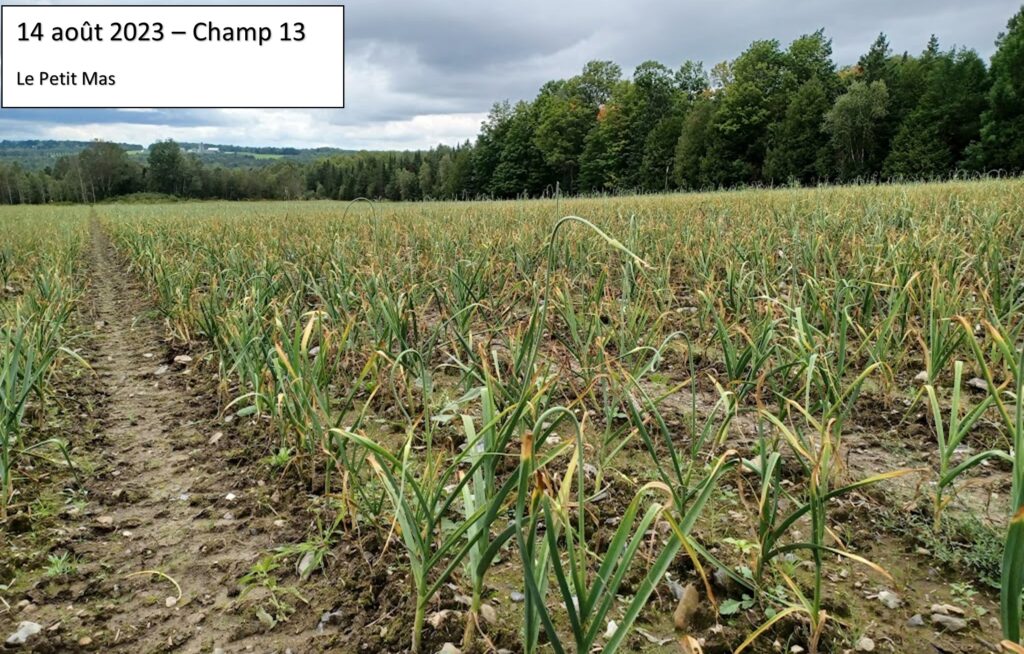
6. We harvested the garlic scapes from the fall plots between June 26 and July 5. We cut the garlic scapes from the spring plots between July 13 and August 15. The garlic scapes did not emerge in a synchronized manner and were generally smaller than the fall garlic flowers.
7. We started harvesting the garlic from the fall plots on July 19 and began harvesting the garlic from the spring plots on August 17.
Conclusion
While the experiment yielded mixed results, with some small-size garlic and about 1/3 of the harvest being«SOLO» garlic, we were successful in staggering the harvest, which was our main objective. We have therefore refrozen garlic seeds for planting in spring 2024. Will we have «SOLO» garlic in 2024? Stay tuned!
Références
(1) Solo Garlic, 2023-10-01, Wikipedia Available at: https://en.wikipedia.org/wiki/Solo_garlic (consulté le 2023-11-24
(2) Photo credit: https://www.deltasontrading.com/black-garlic-products/black-solo-garlic

